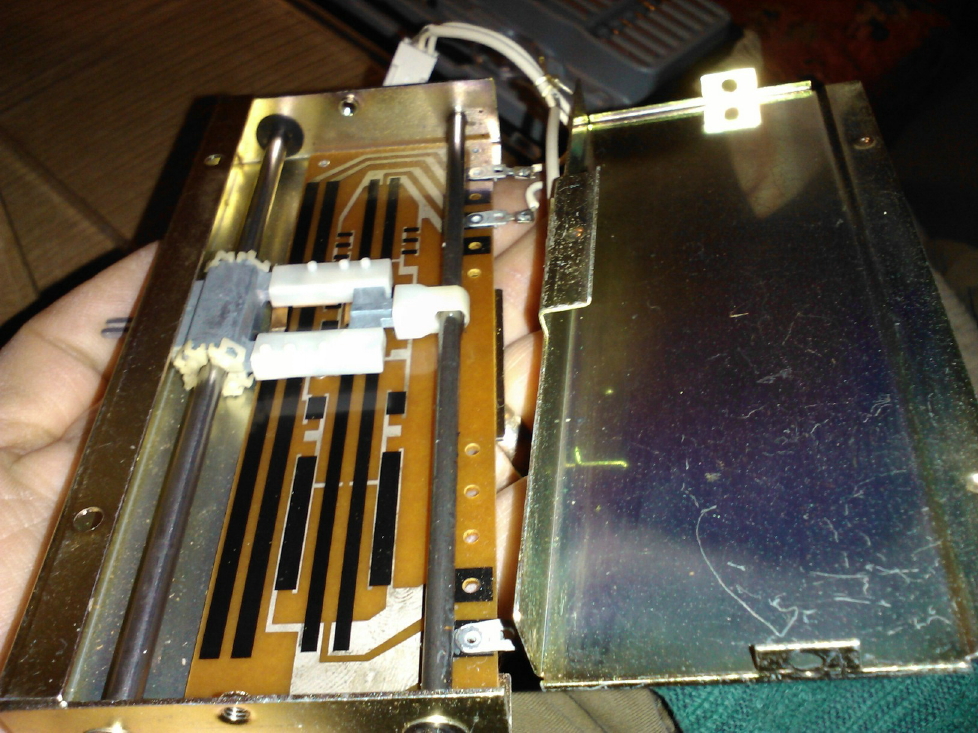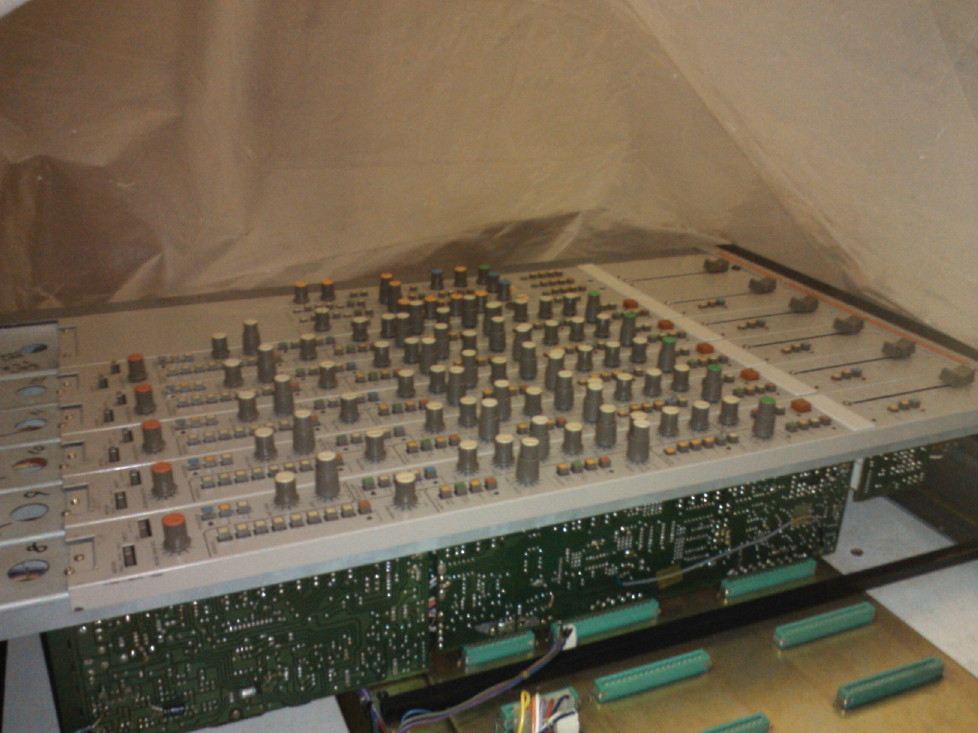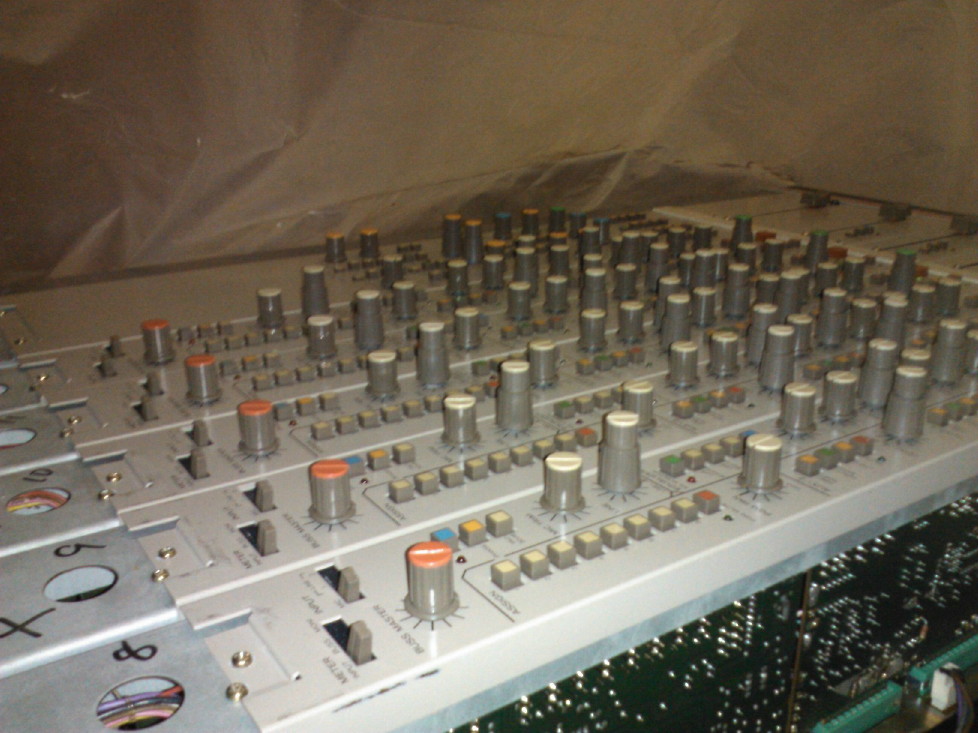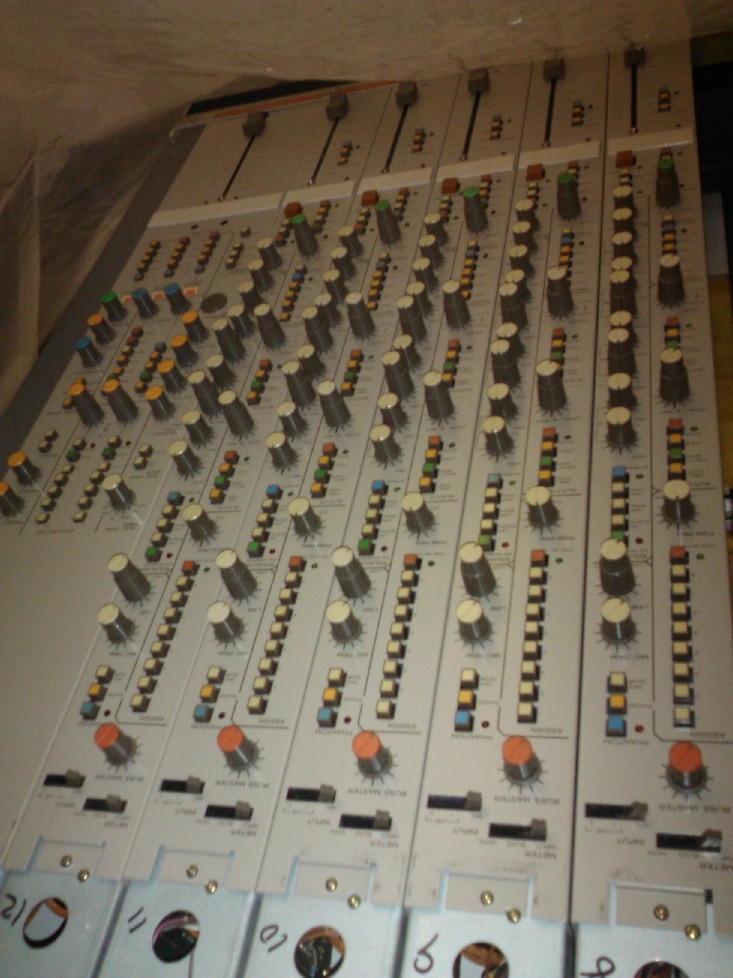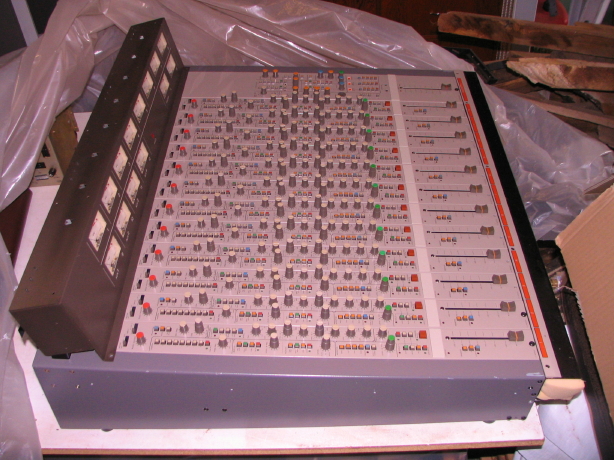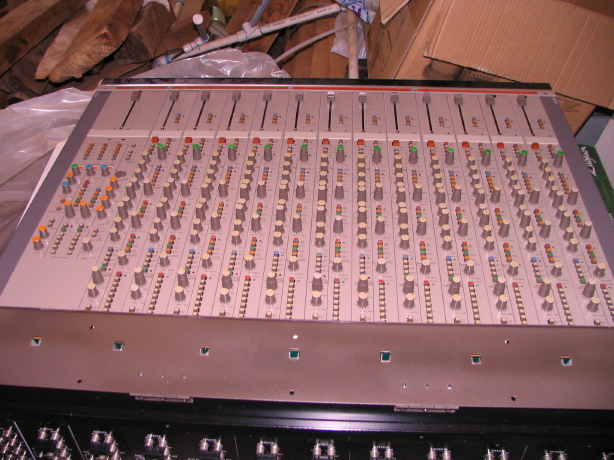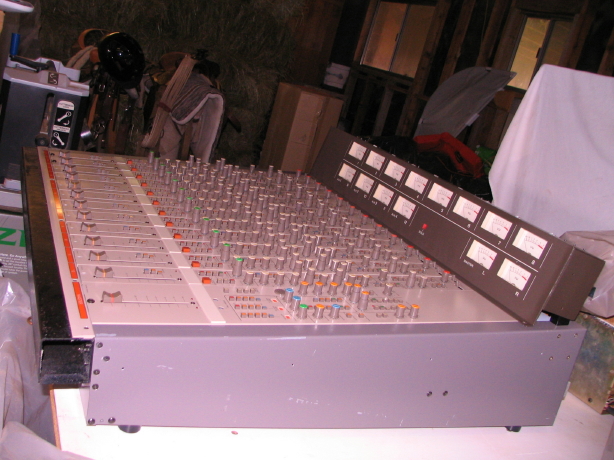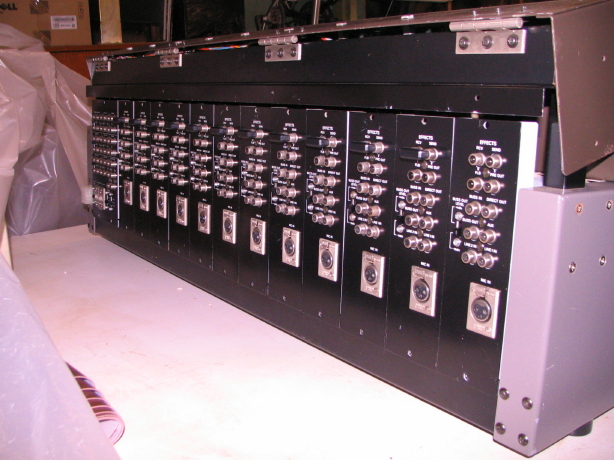sweetbeats
Reel deep thoughts...
Well, I had an interested party, but, understandably, it was prohibitive to ship to NY from the West coast, so its still here.
In the process of getting info of the current status of this mixer for the then potential buyer I decided I have the gumption to finish the cosmetic part of the refurb as well as the minor repairs needed on a couple of the modules. I figure it will make it more marketable and enable the opportunity to get some glamour shots for Ghost.
To summarize this project thus far, the master section has been completely cosmetically refurbished and repaired (multiple wiring repairs, the repair to the oscillator and a some pot repairs), and 100% recapped...the master section is 100%. The meter bridge has been cosmetically refurbished (including selective painting of the housing) and 100% recapped...all the lamps are working. In short the meter bridge is also 100%. The frame has also been cosmetically refurbished including new paint, and multiple repairs to the motherboard have been executed...frame is also 100%. The power supply which was non-existent when I obtained the mixer was brought into existence via a power supply for an M-520 mixer which is about as appropriate as one could get since it is clear that this prototype mixer is, in part, a forerunner to the M-50/M-500 series mixers. The power supply was cosmetically refurbished, mildly modified to match the requirements of the mixer, and 100% recapped. The one-of-a-kind power supply umbilical to interface the power supply and frame was also fabricated. Power supply? 100%. Last but not least two I/O modules have been cosmetically refurbished, 100% recapped and repaired as needed and are..100%. All audio IC sites were socketed on those two modules. That leaves 10 I/O modules to, at the very least, be repaired as needed and cleaned up, and the finishing touch, the solid walnut trim panels to be fabricated.
The walnut material has been selected and skip-planed, and all the rest of the knob and switchcaps have had soap and a toothbrush taken to them. That's where things were at.
Each module has a total of 11 jacks; one XLR, and 10 RCA. The RCA jacks are PCB mounted in two blocks; one block of 6 and one block of 4. One of the 6-jack blocks on one of the modules looked like a couple of the jacks got ripped right off with some cabling or something. Lucky me I found an identical jack block on some spares from an M-300 series mixer I used to have. Sweet. Repaired jack set on the left, the bad part on the right ready for its new assignment taking up space in the trash can:
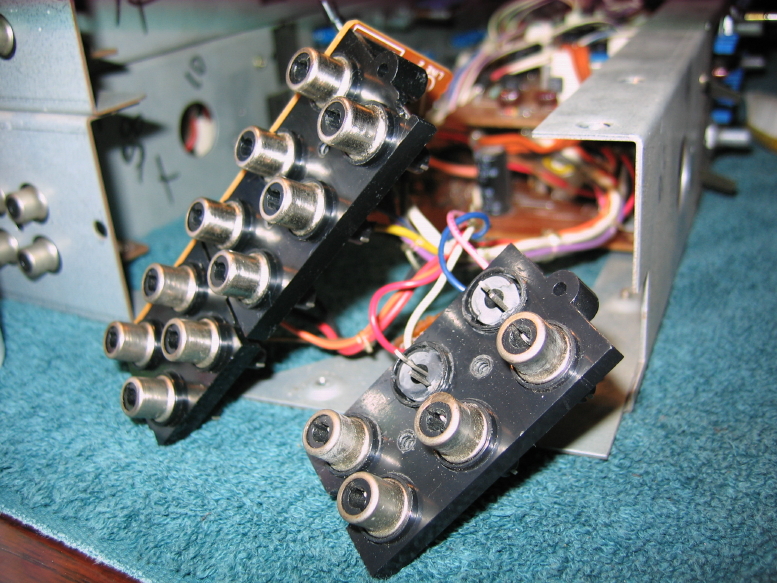
Here are the 10 modules in process stripped of dress panels and jack plates:
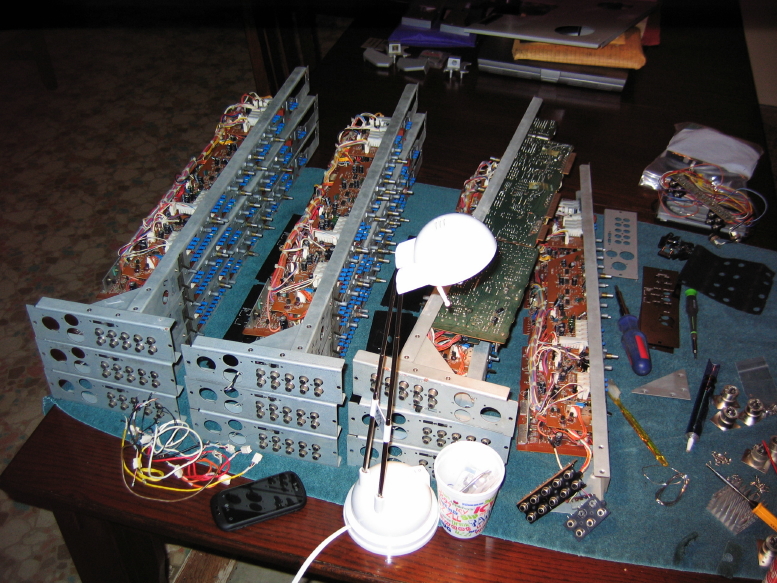
Jack plates ready for polishing:
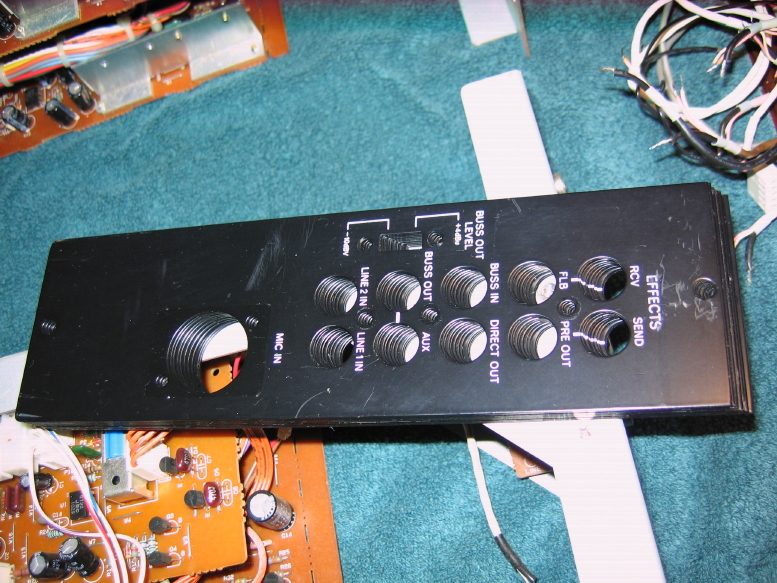
This is the first time the dress panels have been off of these modules and, like the master section chassis, one of the I/O module chassis had lots of hand-written designators on it. Prototype indeed:
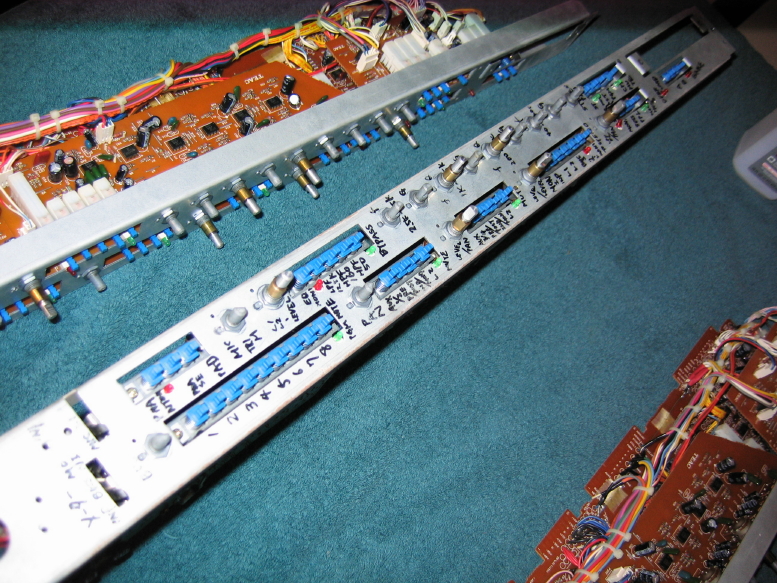
Oh, and by the way, if anybody was wondering if module #6 was okay, the proof is in writing...hahah!
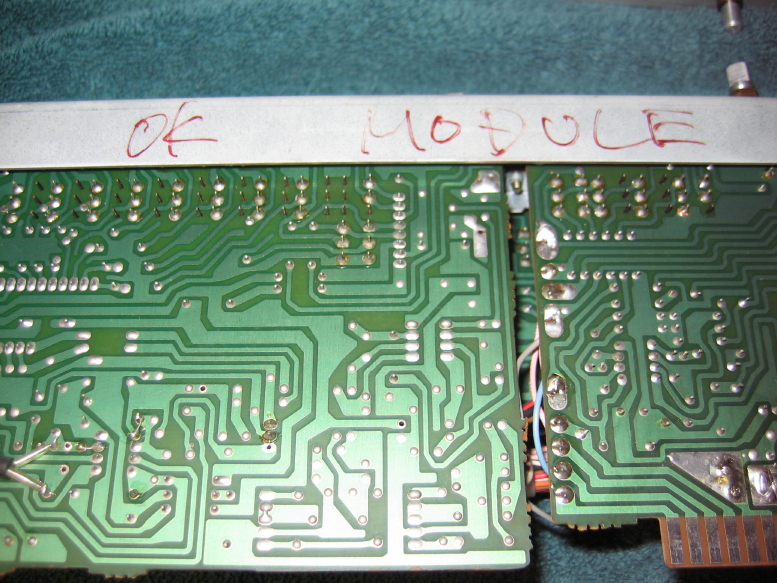
Here are three of the modules in process. What's happing with these 10 modules involves a less in-depth cleaning. The dress and jack panels are being cleaned and polished as with the master section and the two fully refurbished I/O modules, but I'm not totally disassembling the modules and getting them clean-clean-clean. Loose dust and dirt is being removed for the most part, and they are being inspected for any loose wires and such, but I'm not recapping them and cleaning all the pots out and such. That will be something for the new owner to do if so desired (all the caps necessary to finish the recap are included with the mixer). So my intention is for the modules to be 100% functional, and very pretty, but also 100% original. Anyway, here are three in process:
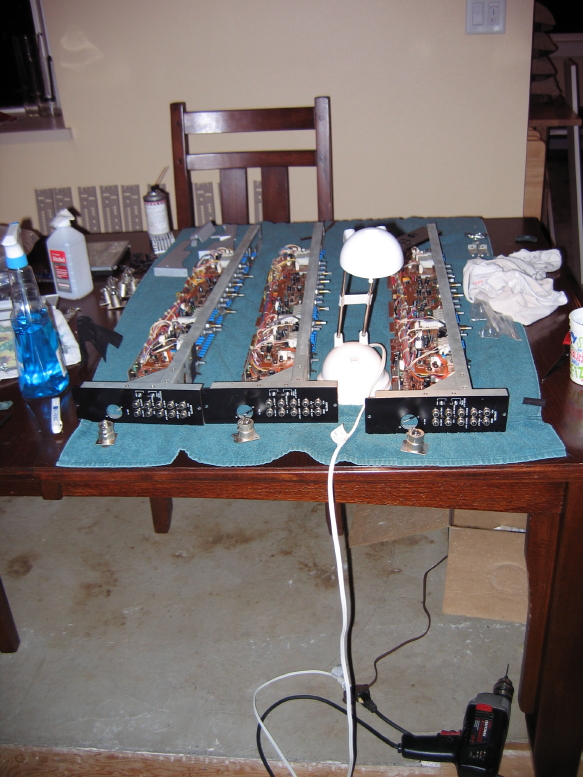
I'm also replacing the dust gaskets on the input and meter source select switches since the original rubber ones were toast. The material I'm using is from M-520 spares. Also notice how nice the push-switches cleaned up...for all the neglect this thing displayed when I got it, I really do think it has low mileage overall, and that it presumeably spent its life on southern California is good...dryer environment. Anyway, closeup of the gaskets and some switches:
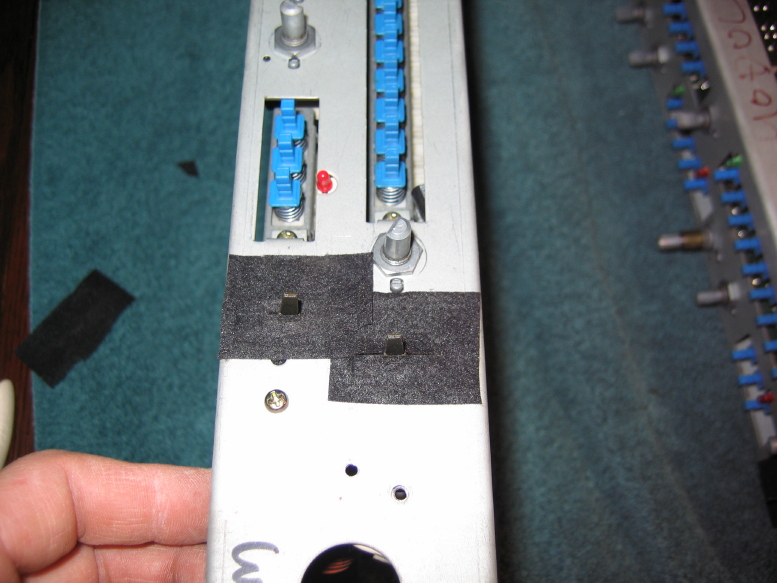
At the end of the day, all 10 modules are now cleaned and inspected, and the panels are polished up...I just need to do a little cleaning of the faders and straighten some of the fader knob shafts and then its time to reassemble and reinstall the modules back in the frame. Then it'll be on to woodworking.
This thing is going to look fantastic.
I'll be wanting more than $300 when I'm done for sure.
This mixer is the only hybrid recording/FOH/broadcast console I've ever seen...if there's a feature you want its probably got it, and a number of things that would surprise you. If you like one-of-a-kind super cool-devices, this mixer qualifies.
Stay tuned...
In the process of getting info of the current status of this mixer for the then potential buyer I decided I have the gumption to finish the cosmetic part of the refurb as well as the minor repairs needed on a couple of the modules. I figure it will make it more marketable and enable the opportunity to get some glamour shots for Ghost.
To summarize this project thus far, the master section has been completely cosmetically refurbished and repaired (multiple wiring repairs, the repair to the oscillator and a some pot repairs), and 100% recapped...the master section is 100%. The meter bridge has been cosmetically refurbished (including selective painting of the housing) and 100% recapped...all the lamps are working. In short the meter bridge is also 100%. The frame has also been cosmetically refurbished including new paint, and multiple repairs to the motherboard have been executed...frame is also 100%. The power supply which was non-existent when I obtained the mixer was brought into existence via a power supply for an M-520 mixer which is about as appropriate as one could get since it is clear that this prototype mixer is, in part, a forerunner to the M-50/M-500 series mixers. The power supply was cosmetically refurbished, mildly modified to match the requirements of the mixer, and 100% recapped. The one-of-a-kind power supply umbilical to interface the power supply and frame was also fabricated. Power supply? 100%. Last but not least two I/O modules have been cosmetically refurbished, 100% recapped and repaired as needed and are..100%. All audio IC sites were socketed on those two modules. That leaves 10 I/O modules to, at the very least, be repaired as needed and cleaned up, and the finishing touch, the solid walnut trim panels to be fabricated.
The walnut material has been selected and skip-planed, and all the rest of the knob and switchcaps have had soap and a toothbrush taken to them. That's where things were at.
Each module has a total of 11 jacks; one XLR, and 10 RCA. The RCA jacks are PCB mounted in two blocks; one block of 6 and one block of 4. One of the 6-jack blocks on one of the modules looked like a couple of the jacks got ripped right off with some cabling or something. Lucky me I found an identical jack block on some spares from an M-300 series mixer I used to have. Sweet. Repaired jack set on the left, the bad part on the right ready for its new assignment taking up space in the trash can:

Here are the 10 modules in process stripped of dress panels and jack plates:

Jack plates ready for polishing:

This is the first time the dress panels have been off of these modules and, like the master section chassis, one of the I/O module chassis had lots of hand-written designators on it. Prototype indeed:

Oh, and by the way, if anybody was wondering if module #6 was okay, the proof is in writing...hahah!

Here are three of the modules in process. What's happing with these 10 modules involves a less in-depth cleaning. The dress and jack panels are being cleaned and polished as with the master section and the two fully refurbished I/O modules, but I'm not totally disassembling the modules and getting them clean-clean-clean. Loose dust and dirt is being removed for the most part, and they are being inspected for any loose wires and such, but I'm not recapping them and cleaning all the pots out and such. That will be something for the new owner to do if so desired (all the caps necessary to finish the recap are included with the mixer). So my intention is for the modules to be 100% functional, and very pretty, but also 100% original. Anyway, here are three in process:

I'm also replacing the dust gaskets on the input and meter source select switches since the original rubber ones were toast. The material I'm using is from M-520 spares. Also notice how nice the push-switches cleaned up...for all the neglect this thing displayed when I got it, I really do think it has low mileage overall, and that it presumeably spent its life on southern California is good...dryer environment. Anyway, closeup of the gaskets and some switches:

At the end of the day, all 10 modules are now cleaned and inspected, and the panels are polished up...I just need to do a little cleaning of the faders and straighten some of the fader knob shafts and then its time to reassemble and reinstall the modules back in the frame. Then it'll be on to woodworking.
This thing is going to look fantastic.
I'll be wanting more than $300 when I'm done for sure.
This mixer is the only hybrid recording/FOH/broadcast console I've ever seen...if there's a feature you want its probably got it, and a number of things that would surprise you. If you like one-of-a-kind super cool-devices, this mixer qualifies.
Stay tuned...



 ..........
.......... 
